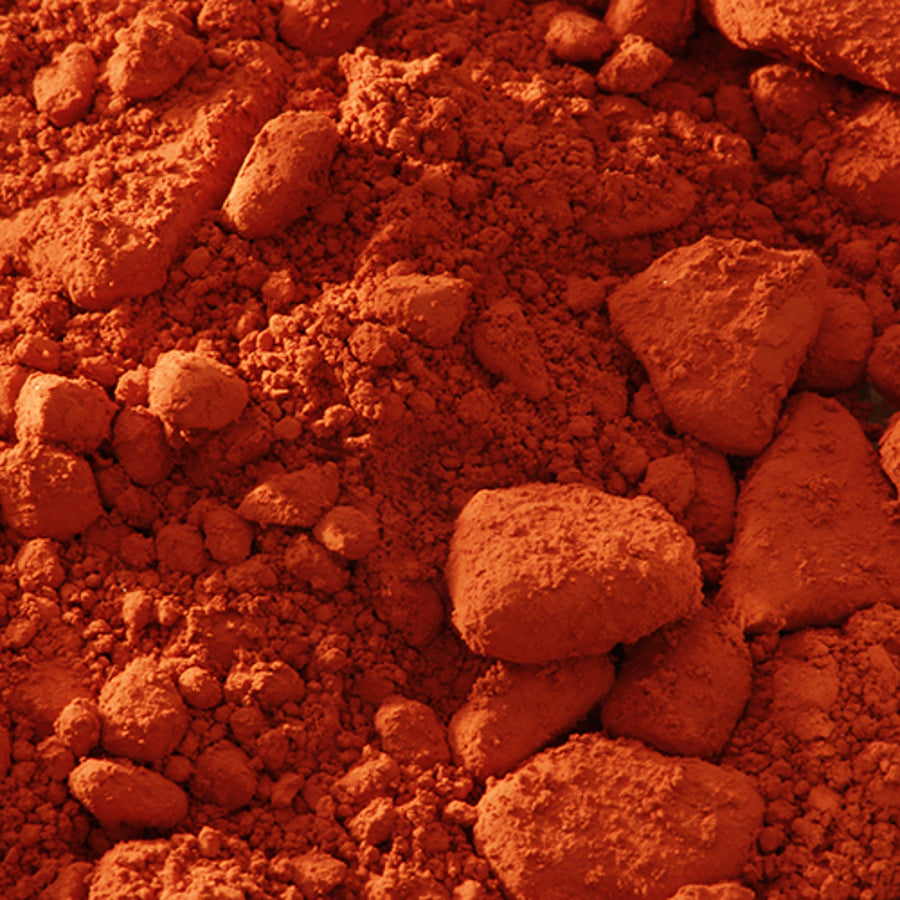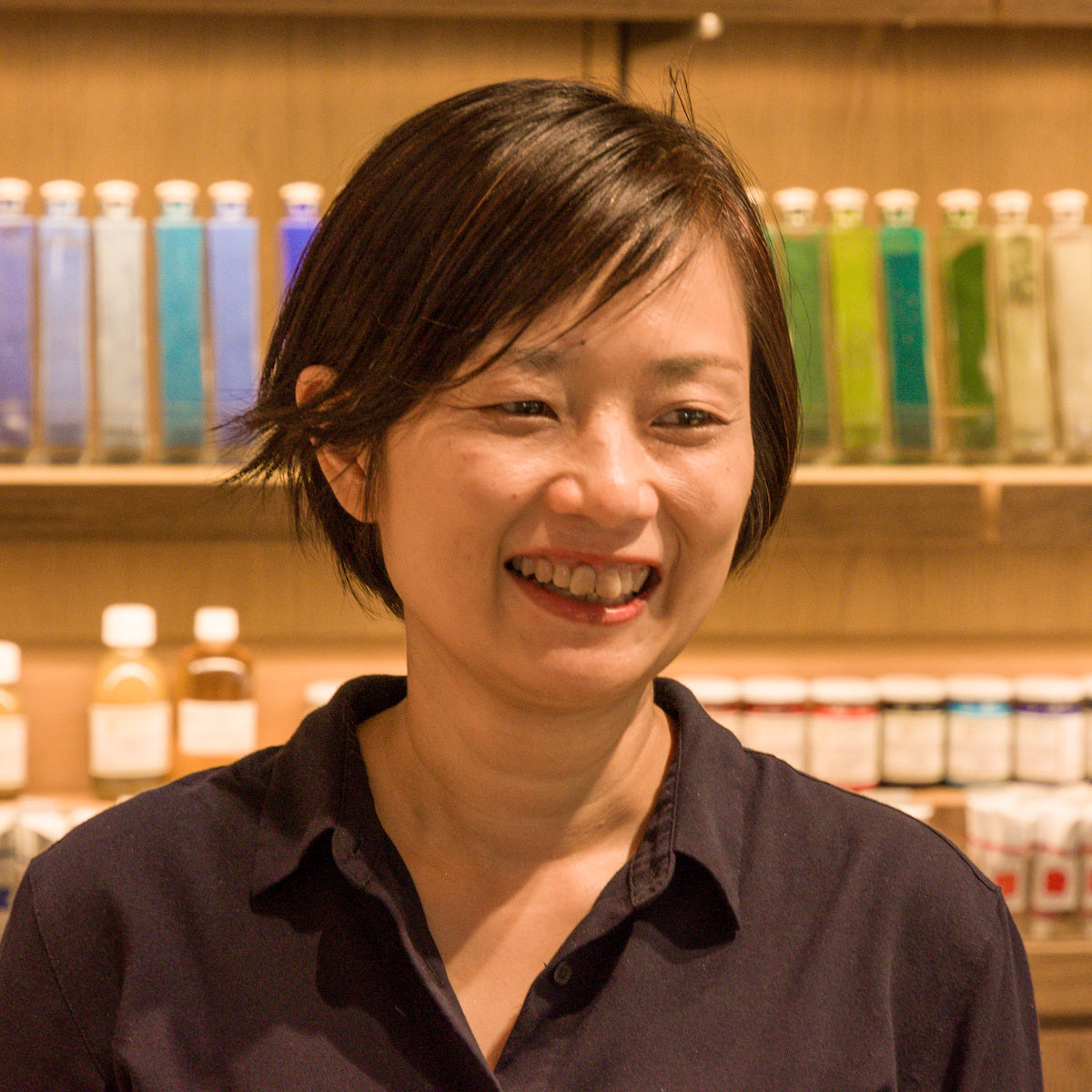The relationship between us humans and pigments has been around since the pre-Christian era, as I have mentioned several times in other FEATURE articles, and the origin among all the color materials is what we called earth pigments.
The historically famous cave paintings at Lascaux in France used earth pigments, charcoal and blood during the prehistoric era.
Therefore, in this article, I would like to focus on colors made from the soil found across the world.

PIGMENT TOKYO carries 50 colors of earth pigments.
According to the names of the colors, you will be able to know the countries where the soil is originally from, not only Japan but also China, Russia, England, Germany, Italy, Greece, Czech Republic, France and Morocco, which are about ten different countries.
You can imagine the colors of the earth and feel as if you’re visiting these places by just looking at them.
The way of making paints with earth pigments is the same as with Suihi pigments. Earth pigments are made by refining soil with water and then forming it into plates by letting it dry naturally.
It varies depending on the soil type but most of them are hard, therefore, it’s necessary to grind the pigments into powder before adding a binder to create paints.
Next, I will compare four different earth pigments so you can see the difference.

【Art Materials Used】
Pigment: Italian Bengara
Binder: Gum Arabic Medium
Substrate: Bamboo Washi for Watercolor Art Pad
Of all the earth pigments, Bengara is the most familiar to people living in Japan. It is used to paint the vermilion-colored torii gates in Shinto shrines, and it contains iron oxide.
Although the pigment appears brown, it creates a calm vermillion shade with a slight brown tinge once it is applied to paper.
Other than Bengara, there is another type of red earth pigment called Taisha.

【Art Materials Used】
Pigment: Moroccan Odo
Binder: Gum Arabic Medium
Substrate: Bamboo Washi for Watercolor Art Pad
When it comes to the color yellow, there are different shades ranging from light-yellow to reddish-yellow.
Moroccan Odo has a subtle shade when it’s dry and will turn into a slight reddish and deeper shade when it gets wet.

【Art Materials Used】
Pigmentl: Bohemian Green Earth
Binder: Gum Arabic Medium
Substrate: Bamboo Washi for Watercolor Art Pad
There are only three types of green earth pigments: Bohemian Green Earth, Russian Green Earth and Italian Green Earth. The fascinating thing about earth pigments is that the color of green soil can differ depending on where it is mined.
Also, the thickness of the pigment varies depending on the soil type, so it is necessary to adjust the amount of binder when you make paints to match the characteristics of each earth pigment and the style you’re trying to create.

【Art Materials Used】
Pigment: German Gin Nezumi
Binder: Gum Arabic Medium
Substrate: Bamboo Washi for Watercolor Art Pad
The white earth pigments can be found in countries like Japan and China.German Gin Nezumi is an ashy color with a slight blue tinge.
Other white earth pigments also come in the brownish or yellowish shade, so you have multiple options to pick from.
In the following picture, I painted the same German Gin Nezumi but on black paper.
As you can see, even with the same pigment, the color aspect changes when applied to a different background.
You can experiment with different substrates and painting grounds to create textures, furthermore, you can also adjust the color tones and glossiness by adding certain mediums to the paint.
Therefore, it is totally up to the artists to find the best way to use them!

【Art Materials Used】
Pigment: German Gin Nezumi
Binder: Gum Arabic Medium
Substrate: (Black) Torinoko Paper
Many earth pigments are stiffer than Suihi pigments and tend to leave lumps on the surface. To create a smooth paint, you need to grind the pigment well using a mortar and pestle or roll a stick over the earth pigment covered by paper to create a fine powder before mixing it with any binders.
Although it is very important to choose the right binder and adhesion strength, the way to create a certain texture is also depending on the coarseness of the particles.

We did a LIVE on Instagram about earth pigments a while ago, so feel free to click the link below to learn more.
◾️Instagram【IGTV】Earth pigments / 土絵具
https://www.instagram.com/tv/CU9kjKtIcoj/
The colors of our mother earth show us a wide variety of possibilities.
Therefore, it’s always exciting to see what kind of color will be created while inspired by the origin, climate and name of the earth pigments.
Translated by Atsumi Okano
PIGMENT TOKYO Art Materials Expert


















